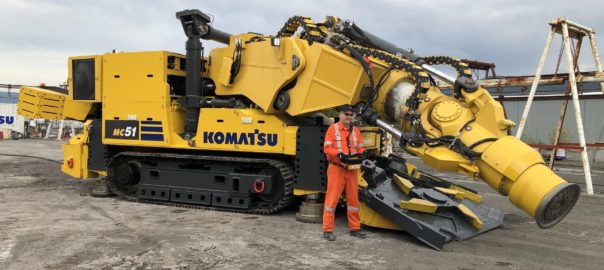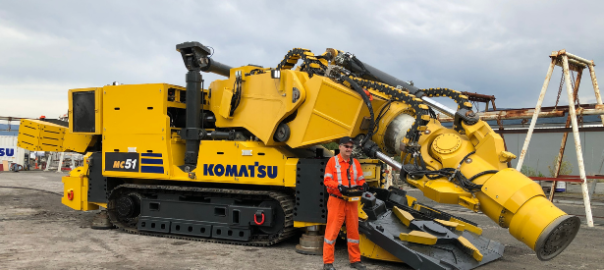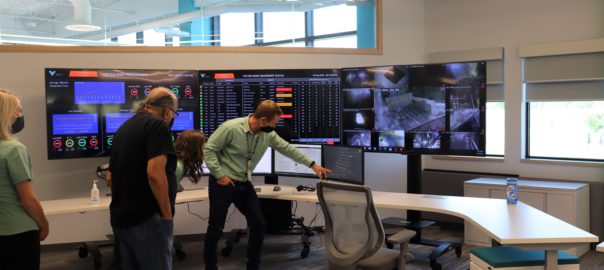Komatsu and Vale are set to reveal more about their underground hard-rock mechanised cutting technology collaboration at the upcoming MINExpo 2021 event next month.
The companies, through the Canada Mining Innovation Council, have been engaged on a project to advance the future of underground hard rock excavation through optimising use of Komatsu’s DynaCut mechanical cutting technology.
Vale and Komatsu will start trialling DynaCut’s capabilities on Komatsu’s new MC51 machine at Vale’s Garson Mine in Sudbury, Ontario, Canada, shortly, working together to increase the pace at which the innovative technology will be available to the larger market.
The machine is set up at Garson and expected to start cutting in the next month, IM understands.
“True innovation requires effective collaboration between the end user and suppliers to ensure the technology meets the needs of the industry,” Dino Otranto, Chief Operating Officer of North Atlantic Operations and Asian Refineries for Vale, said. “This partnership is that first step to really prove and understand the technology, while meeting our high standards for safety.”
Through more than 10 years of research and development, Komatsu says it has determined how to break rock continuously and precisely through a fully-electric system that outputs zero emissions. By automating and controlling processes so the machine can be operated remotely via line of site, Komatsu customers can move their operators further from the cutting face and from harm’s way leveraging DynaCut technology and the MC51 machine, it said.
Rudie Boshoff, Director of Hard Rock Cutting Systems at Komatsu, said: “We’re excited to be trialling this new machine and technology because it offers the potential to really change the way our customers mine. Not only does the DynaCut technology provide a very controllable way of cutting rock – within 50 mm accuracy to plan – the machine itself, the MC51, is designed to advance more sustainable mining methods by reducing the amount of equipment required to get to the orebody.”
Komatsu and Vale will be co-presenting about their partnership to drive innovation on September 13, 2021, on stage at the Komatsu booth in Las Vegas.










